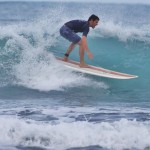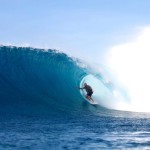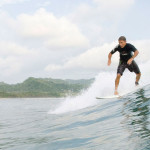The Basics of Surfing
The Basics of Surfing
There is no doubt that surfing is one of the most exhilarating and enjoyable sports. There are millions of surfers throughout the world from all walks of life. From celebrities, sport enthusiasts to vacationers and little kids, surfing is widely practiced. However, it is not at all easy to learn. You see a professional riding a wave and you tell yourself that it looks easy. But just as soon as you will hit the waves, you will find out how difficult it actually is. So, before you face the ocean, it would be better to learn the basic tips and later familiarize yourself with the beginner’s moves.
The Essentials
Swimming is the closest thing to surfing and to surf you require excellent swimming skills for your own safety and comfort. Before you begin riding the waves, you need to become a regular swimmer. Make a schedule and stick to it! Where do you swim; in pools, lakes or the ocean? If it is the former you will need to practice swimming in the sea first. Just like surfing, swimming is all about the right technique rather than strength. A good swimmer will have more flexibility and an understanding of the ocean, currents and tides. Take pre-surfing lessons. Join a certified surf school and practice the moves with a professional instructor. Not only you will get to know the tips, surfing with an instructor will also give you a dose of confidence. Buy yourself a perfect surfboard. There are different kinds of boards available, and for first timers, a shortboard is a good option. It is easily maneuverable and has good speed. Once you have your surfboard, practice the right way to lie, paddle, sit and stand on the surfboard for hours. Before entering the ocean, dress up according to the temperature. If it is hot, a sleeveless shirt or a swimsuit will do but if it is cold, you will require a long sleeved short, a jacket or a neoprene or a rubber wetsuit. You should also buy a cushioned plastic helmet and an ankle strap to secure you to the board.
In the Ocean
Choose a Suitable Location
Find a location where the waves are slow, mellow and merciful. On your first surfing trip, you must have fun and for that you need a wave which has a rolling and slow break so you can easily get up on your feet without losing balance. Waves which are steep and hollow will only throw you off your feet making you exhausted and frustrated. Prior to entering the ocean, practice paddling on the beach as if you are floating in the water.
Surfing in the Whitewater
In the water, spend about 20 minutes paddling and sitting on your surfboard without falling of it. Once you get a hang of it, it is time to catch a whitewater wave by bellyboarding. A whitewater wave is a frothy aftermath of a swell heading towards the shore. Compared to the real, raging waves of the open sea, it is very easy to catch a whitewater mass. To catch it, you need to bellyboard towards the shore until you feel the energy of the wave after which you just have to let it take you over to the beach. Practice this with different waves until you are a bellyboarding pro in the whitewater. After belly boarding comes kneeboarding. Kneebaording requires a lot more coordination than surfing on your stomach. Try to catch a whitewater wave on your knees this time until you have perfected the art of kneeboarding. Now it is time to stand up on your feet. It is a big step and you are prone to fall a lot. To stand up without falling off, you need to do a ‘pop-up’. It is a quick motion in which you get up very quickly from your belly to feet. Once you know how to stand up without any struggle, catching a real wave becomes real easy.
catch a whitewater wave by bellyboarding. A whitewater wave is a frothy aftermath of a swell heading towards the shore. Compared to the real, raging waves of the open sea, it is very easy to catch a whitewater mass. To catch it, you need to bellyboard towards the shore until you feel the energy of the wave after which you just have to let it take you over to the beach. Practice this with different waves until you are a bellyboarding pro in the whitewater. After belly boarding comes kneeboarding. Kneebaording requires a lot more coordination than surfing on your stomach. Try to catch a whitewater wave on your knees this time until you have perfected the art of kneeboarding. Now it is time to stand up on your feet. It is a big step and you are prone to fall a lot. To stand up without falling off, you need to do a ‘pop-up’. It is a quick motion in which you get up very quickly from your belly to feet. Once you know how to stand up without any struggle, catching a real wave becomes real easy.
Surfing is an addictive sport. On your very first surfing trip, you will either fall in love with it or not. If it is the former one, then you are going to have plenty of fun.



















